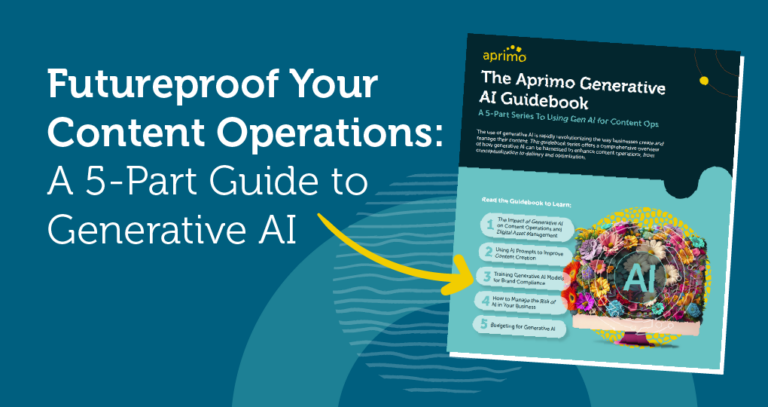Marketing Resource Management for Enterprise Brands


Understanding Marketing Resource Management (MRM)
For modern marketers and enterprise brands, marketing resource management (MRM) helps pave the way for unparalleled success in marketing endeavors. MRM is a comprehensive solution that streamlines the way companies handle marketing resources, from planning to distribution. For enterprise brands, MRM orchestrates content planning, creation, and distribution within one unified platform. This unified approach enhances efficiency and allows teams to collaborate in a way that mitigates the problem of silos.
Without MRM, enterprise brands face common challenges in managing marketing resources, including:
-
Fragmented workflows: Disjointed workflows lead to inefficiencies in content creation and distribution.
-
Lack of visibility: The lack of a centralized system results in poor visibility into content performance, which makes it challenging to assess the impact of marketing efforts.
-
Version control issues: Managing multiple versions of assets can lead to potential errors and inconsistencies in marketing collateral.
-
Resource allocation challenges: Without a platform designed to guide the allocation process, optimizing resources across diverse marketing channels is tedious.
-
Compliance and brand consistency: Maintaining compliance standards and brand consistency across a variety of channels becomes more and more complex.
Features and Components of Effective MRM Solutions
MRM solutions depend on key features and components to truly elevate the efficiency and impact of an organization’s marketing efforts. First and foremost, an effective MRM solution thrives on centralized asset management. Imagine that all of an organization’s digital assets, from graphics and videos to campaign collateral, are carefully organized and easily accessible within a unified platform. This eliminates the chaos associated with scattered files and empowers teams to swiftly locate and deploy assets. It creates and maintains a harmonious content ecosystem.
Alongside centralized asset management, a huge contributor to MRM’s effectiveness is workflow automation and collaboration tools. These tools keep the entire content creation process moving, expedite content creation, and strengthen teams. A notable example is the integration of approval workflows, where stakeholders can collaborate in real time to check that each piece of content aligns with the brand’s vision.
Budgeting and financial management capabilities help allocate resources and provide a granular view of how the marketing budget is being used. Enterprises use this information to optimize their marketing spend for maximum impact. For example, integrating predictive analytics allows marketing teams to forecast expenses and allocate funds strategically for upcoming campaigns.
A comprehensive MRM solution boasts analytics and reporting features that offer in-depth insights into the performance of marketing campaigns. For instance, advanced analytics tools measure engagement, conversion rates, and overall campaign success, which enterprises can use to refine strategy.


Advantages of Implementing MRM for Enterprise Brands
Embracing MRM brings many advantages that trickle down through the entire marketing domain. Enterprise brands experience the following and more:
-
Streamlined workflows and processes that eliminate bottlenecks, reduce redundancies, and enhance the overall efficiency of content creation and distribution
-
Enhanced visibility and control for tracking campaigns and empowering decision-makers with insights into the performance of every initiative
-
Improved collaboration across teams and departments to break down silos and establish a shared space for teams to collaborate, whether it’s content creation, approval workflows, or strategic planning
-
Optimal resource allocation and budget utilization for brands to allocate resources judiciously and guarantee maximum impact and return on investment
As teams embrace and become more adept at leveraging marketing resource management software, the benefits multiply beyond those mentioned above. Adopting an MRM is the start of a journey toward unmatched efficiency and innovation for enterprise brands.
Key Considerations for Selecting an MRM Solution
The initial selection process has a huge effect on the future success of an MRM. Organizations must think beyond core functionalities and consider points like the following:
Scalability and Customization Options
Scalability is a desirable feature, but it’s also a strategic necessity. As enterprises evolve, their MRM needs must scale to accommodate increased demands. Look for a solution that offers scalability and customization without compromising performance.
Integration Capabilities With Existing Systems
An effective MRM solution should integrate seamlessly with existing systems like customer relationship management, enterprise resource planning (ERP), and other essential tools. This makes a complete system free of data silos.
User-Friendly Interface and Accessibility
A user-friendly interface that prioritizes intuitiveness and simplicity will be widely accepted by users. Accessibility is equally crucial. The right solution will empower all team members regardless of ability.
Security and Compliance Measures
Robust security measures, including data encryption, role-based access controls, and regular audits, safeguard against unauthorized access and potential data breaches. Compliance with industry-specific regulations will protect marketing assets and data.

Frequently Asked Questions
How does MRM differ from traditional project management systems?
MRM stands out from traditional project management systems by being tailor-made for marketing-related tasks and workflows. It encompasses specialized features such as campaign management, asset tracking, and financial planning, which are uniquely designed to address the intricacies of marketing operations. This sets MRM apart from broader project management tools.
Can mid-sized businesses benefit from MRM solutions?
Absolutely. While MRMs are often associated with larger enterprises, small and mid-sized businesses can also reap significant benefits. These solutions offer streamlined workflows, improved collaboration, and enhanced resource allocation. However, for small and mid-sized businesses, the procurement process is especially important. These organizations need to acquire an MRM solution that is tailored to their scale and specific requirements.
What are the typical implementation challenges of MRM for enterprise brands?
Enterprise brands may face challenges during MRM implementation, including resistance to change, data migration issues, complexities in integrating with existing systems, and ensuring widespread user adoption across the organization. Overcoming these challenges requires careful planning, communication, and a phased approach to implementation.
How does MRM contribute to ROI for enterprise brands?
MRM significantly contributes to ROI by optimizing marketing resource allocation, reducing redundant efforts, enhancing overall productivity, and providing valuable insights for data-driven decision-making. The cohesive and centralized nature of MRM ensures that enterprises can make informed choices. This ultimately leads to improved return on investment for marketing initiatives.




